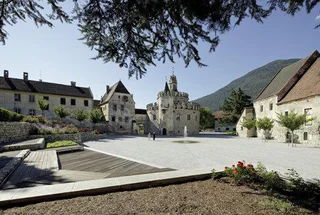
Parish church in Meransen
Maranza/Meransen, Mühlbach/Rio di Pusteria, Brixen/Bressanone and environs

Maranza/Meransen, Mühlbach/Rio di Pusteria, Brixen/Bressanone and environs

1/6
Novacella/Neustift, Vahrn/Varna, Brixen/Bressanone and environs

1/6
Bressanone città/Brixen Stadt, Brixen/Bressanone, Brixen/Bressanone and environs

Bressanone città/Brixen Stadt, Brixen/Bressanone, Brixen/Bressanone and environs

Valles/Vals, Mühlbach/Rio di Pusteria, Brixen/Bressanone and environs

Bressanone città/Brixen Stadt, Brixen/Bressanone, Brixen/Bressanone and environs

1/3
Sciaves/Schabs, Natz-Schabs/Naz-Sciaves, Brixen/Bressanone and environs

1/4
Bressanone città/Brixen Stadt, Brixen/Bressanone, Brixen/Bressanone and environs

Lazfons/Latzfons, Klausen/Chiusa, Brixen/Bressanone and environs

Bressanone città/Brixen Stadt, Brixen/Bressanone, Brixen/Bressanone and environs

1/6
Villa/Vill - Rodengo/Rodeneck, Rodeneck/Rodengo, Brixen/Bressanone and environs

1/8
Chiusa/Klausen, Klausen/Chiusa, Brixen/Bressanone and environs

1/4
Bressanone dintorni/Brixen Umland, Brixen/Bressanone, Brixen/Bressanone and environs

Spinga/Spinges, Mühlbach/Rio di Pusteria, Brixen/Bressanone and environs

Ponte Gardena/Waidbruck, Barbian/Barbiano, Brixen/Bressanone and environs

Sciaves/Schabs, Natz-Schabs/Naz-Sciaves, Brixen/Bressanone and environs

1/8
Terento/Terenten, Terenten/Terento, Brixen/Bressanone and environs

1/4
Bressanone città/Brixen Stadt, Brixen/Bressanone, Brixen/Bressanone and environs

1/3
Luson/Lüsen, Lüsen/Luson, Brixen/Bressanone and environs

1/4
Lazfons/Latzfons, Klausen/Chiusa, Brixen/Bressanone and environs

Rasa/Raas, Natz-Schabs/Naz-Sciaves, Brixen/Bressanone and environs

Naz/Natz, Natz-Schabs/Naz-Sciaves, Brixen/Bressanone and environs

1/3
Sciaves/Schabs, Natz-Schabs/Naz-Sciaves, Brixen/Bressanone and environs

1/3
S.Martino/Reinswald, Sarntal/Sarentino, Brixen/Bressanone and environs

1/3
Giovignano/Tschiffnon, Feldthurns/Velturno, Brixen/Bressanone and environs

1/3
Luson/Lüsen, Lüsen/Luson, Brixen/Bressanone and environs

1/2
Colma/Kollmann, Barbian/Barbiano, Brixen/Bressanone and environs

1/2
Villandro/Villanders, Villanders/Villandro, Brixen/Bressanone and environs

Caerna/Garn, Klausen/Chiusa, Brixen/Bressanone and environs

1/8
Untrum/Untrum, Feldthurns/Velturno, Brixen/Bressanone and environs